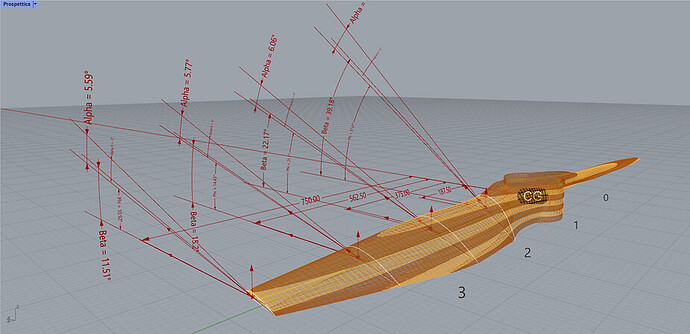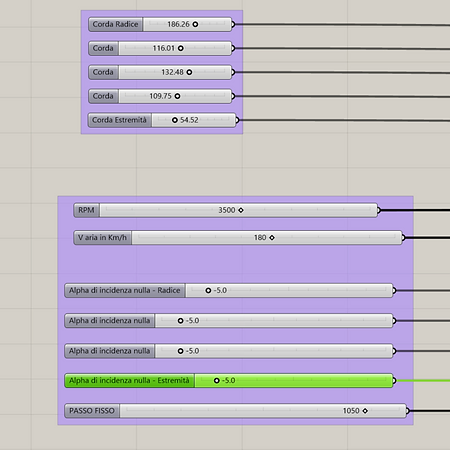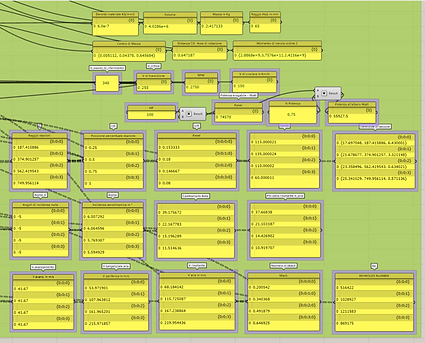Many of us know the B-Series Propeller Generator. It is quite easy to generate a propeller.
Isn’t it to simplified ? Are we missing something ? Is it worth going further especially on the blade airfoil section, chord, twist ?
Found this based on a Rhino 7 extension module called Grasshopper a visual programming language and environment. Propeller Generator is a commercial program but obviously a source of inspiration.
This is what Luca the Italian designer says on https://portanza.wixsite.com/aircode/post/eliche-aeronautiche-3d (Italian only)
At the request of a propeller manufacturer, I have created a definition in Grasshopper for the design of propellers. The control of the shapes is total: radius of the propeller, pitch, number of blades, profile for each blade with the possibility of assigning the angle of zero aerodynamic incidence (alpha 0), length of each chord and any one- or two-dimensional scales near the hub to customise the connection.
The pitch variation can be chosen so that the angle of aerodynamic incidence is, in the region of 70-75% of the radius, the most efficient. The control you have over the shapes allows you to make rapid changes and then reprocess the 3D model with a CFD solver.
The traction calculation is done with Xrotor, which can be downloaded free of charge from here: https://web.mit.edu/drela/Public/web/xrotor/
Below is a summary of the input and output returned by the modelling programme:
The aforementioned propeller was studied in Xrotor by setting the aerodynamic data of the Clark-Y profile taken from airfoiltools.com and the geometric data obtained from the 3D drawing and listed above.
The propeller, from a preliminary approach seems to have good characteristics in terms of efficiency and traction. The next step is the prototyping and verification of the data obtained.
The surface obtained is in fact closed and ready for 3D printing or CNC machining.




